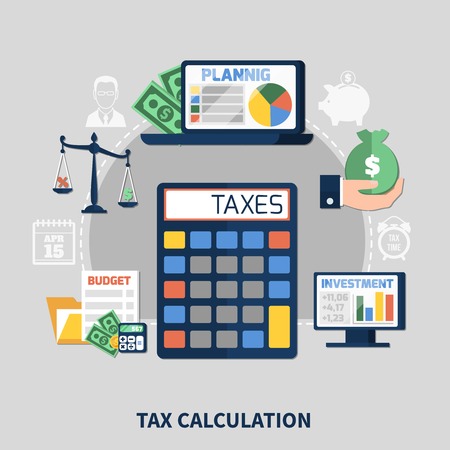1. Understanding State Tax Deductions versus Federal Deductions
When it comes to taxes in the United States, many people focus on their federal tax return and the deductions they can claim there. However, each state has its own set of rules about what’s deductible—and these can be quite different from the federal government’s guidelines.
Federal vs. State Deductions: What’s the Difference?
Federal tax deductions are set by the Internal Revenue Service (IRS) and apply to everyone who files a federal tax return, no matter where you live. State tax deductions, on the other hand, are determined by your individual state’s Department of Revenue or similar agency. This means that something you can deduct on your federal return might not be allowed on your state return, and vice versa.
Key Differences Between Federal and State Deductions
| Aspect | Federal Deduction | State Deduction |
|---|---|---|
| Who sets the rules? | IRS (federal government) | Your state government |
| Applies to all U.S. taxpayers? | Yes | No, only residents or filers in that state |
| Standard Deduction Amounts | Same nationwide (varies by filing status) | Varies widely by state; some states have no standard deduction at all |
| Popular Deductions Allowed | Mortgage interest, charitable donations, medical expenses, etc. | Some states follow federal rules, but others exclude or limit certain items; some states offer unique deductions not found federally |
| No Income Tax? | N/A—federal income tax applies everywhere | Some states (like Texas and Florida) don’t have an income tax at all, so no state-specific deductions apply there |
Why Does This Matter?
If you’re only looking at your federal return when thinking about deductions, you might miss out on savings—or make mistakes—on your state taxes. Some states allow extra breaks for things like college savings or health insurance costs. Others might not let you deduct things that are perfectly acceptable federally. Understanding both sets of rules is key to maximizing your refund and staying compliant.
2. Common State-Specific Deductions You May Be Overlooking
Many Americans miss out on valuable tax deductions simply because they’re unique to their state and not covered by federal tax law. While the IRS offers a set of standard deductions, each state has its own rules—and some offer special breaks that can put more money back in your pocket if you know where to look. Let’s break down some of the most commonly overlooked state-specific deductions across the U.S.
College Savings Plan Contributions
Some states encourage residents to save for college by offering deductions or credits for contributions to 529 college savings plans. Even if you don’t get a federal deduction, your state might reward you for investing in education.
| State | Deduction Amount | Notes |
|---|---|---|
| New York | Up to $5,000 ($10,000 for joint filers) | Must contribute to New Yorks 529 plan |
| Indiana | 20% credit, up to $1,500 per year | Credit instead of deduction; Indiana plan only |
| Georgia | Up to $4,000 per beneficiary ($8,000 joint) | Applies to Georgias 529 plan |
Property Tax Deductions Beyond Federal Limits
The federal SALT (state and local tax) deduction is capped at $10,000, but some states offer additional relief for homeowners. These deductions can help ease the burden of rising property taxes.
| State | Deduction/Relief Offered | Eligibility |
|---|---|---|
| New Jersey | Property tax deduction up to $15,000 (for seniors/disabled) | Seniors and disabled homeowners/renters |
| Pennsylvania | Homestead Exclusion reduces taxable home value | Owner-occupied homes |
| Nebraska | Circuit Breaker program for low-income seniors/disabled | Income and age/disability requirements apply |
Deductions for Medical Expenses
If you have high medical expenses that dont quite meet the federal threshold for itemized deductions, check your state’s rules—some are much more generous.
| State | Description |
|---|---|
| Minnesota | Deductions allowed for medical expenses exceeding 7.5% of AGI (federal threshold is higher) |
| Oregon | Certain seniors can deduct medical expenses even if they don’t itemize federally |
| Iowa | No minimum threshold—deduct all unreimbursed medical/dental expenses if you itemize on state return |
Lesser-Known Deductions Worth Checking Out
- Tennessee: Hall Income Tax credit for certain income sources (phasing out soon)
- Maine: Student loan repayment deduction for qualified residents working in-state after graduation
- Kansas: Deduction for adoption expenses beyond what’s available federally
- Wisconsin: Private school tuition deduction up to $4,000 per student (elementary) or $10,000 (secondary)
- South Carolina: Deduction for retirement income that exceeds federal limits
Why Pay Attention?
If you only look at your federal return, you could be leaving money on the table when filing your state taxes. Each state is different, so double-check your own state’s Department of Revenue website or ask a local tax pro about unique deductions you might qualify for.

3. Hidden Gems: Lesser-Known Deductions by Region
When it comes to state taxes, most people know about the big-ticket deductions—like mortgage interest or student loan interest—but every state has its own hidden gems that can make a real difference. These lesser-known tax breaks are often overlooked simply because people aren’t aware they exist, or they assume they won’t qualify. Let’s shine a spotlight on some of these regional hidden gems that could save you money.
Northeast: Energy Efficiency and Commuter Benefits
States in the Northeast, like New York and Massachusetts, offer special deductions for energy-efficient home improvements and using public transportation. For instance, New York provides a deduction for the installation of solar energy systems, while Massachusetts lets you deduct certain public transit costs.
| State | Deduction | Who Qualifies? |
|---|---|---|
| New York | Solar Energy System Equipment Credit | Homeowners who install solar panels |
| Massachusetts | Public Transit Pass Deduction | Residents who buy MBTA passes |
Midwest: College Savings and Adoption Expenses
If you live in states like Illinois or Minnesota, check out deductions related to education and family-building. Illinois residents can deduct contributions to the state’s 529 college savings plan, and Minnesota offers a deduction for adoption expenses, including legal fees and travel costs.
| State | Deduction | Description |
|---|---|---|
| Illinois | College Savings (529 Plan) | Contributions up to $10,000 per year ($20,000 for joint filers) |
| Minnesota | Adoption Expense Deduction | Covers qualified expenses up to $1,500 per child |
South: Disaster Recovery and Homestead Exemptions
The South is prone to natural disasters—and some states help taxpayers recover through unique deductions. For example, Louisiana allows deductions for hurricane recovery expenses not covered by insurance. Texas offers an expanded homestead exemption that reduces taxable property value for homeowners who’ve made their homes more storm-resistant.
| State | Deduction/Exemption | Main Benefit |
|---|---|---|
| Louisiana | Hurricane Recovery Expenses Deduction | Deductions for unreimbursed disaster recovery costs |
| Texas | Storm-Resistant Homestead Exemption Increase | Lowers property taxes for eligible upgrades to homes |
West: Green Vehicles and Wildfire Mitigation Credits
If you’re living out West, look into credits and deductions designed to promote sustainability and safety. California offers a deduction for wildfire mitigation efforts (like clearing brush), while Oregon gives a credit to residents who buy qualifying electric vehicles.
| State | Deduction/Credit Name | Description/Benefit |
|---|---|---|
| California | Wildfire Mitigation Deduction | Covers costs related to fire prevention on your property (up to set limits) |
| Oregon | EV Purchase Credit/Deduction | A credit for buying qualifying electric vehicles (amount varies) |
Your Next Step: Check What Applies in Your State!
The bottom line? Each region has its own unique set of tax perks that may be easy to overlook. Make sure to dig into your state’s Department of Revenue website or talk with a local tax pro—you might just discover a hidden gem that puts more money back in your pocket.
4. How Residency and Moving Affect Your State Tax Benefits
If you’ve recently moved to a new state or split your time between different states, your eligibility for state-specific tax deductions can get complicated. Let’s break down how changes in residency or living in multiple states could impact the tax breaks you’re counting on.
Understanding State Residency Status
Your “tax home” isn’t always just where you lay your head at night. States define residency differently, but generally, if you spend most of the year in one state, maintain a permanent home there, or have a driver’s license and voter registration there, that’s considered your primary residence for tax purposes.
How Residency Status Impacts Deductions
Many state-specific deductions—like homestead exemptions, college savings plan contributions, or retirement income exclusions—are only available to full-time residents. If you’re considered a part-year resident or a nonresident, your ability to claim these deductions may be limited.
Residency and Deduction Eligibility Table
| Residency Status | State-Specific Deduction Eligibility |
|---|---|
| Full-Year Resident | Eligible for most state deductions |
| Part-Year Resident | May claim deductions on income earned while a resident; some benefits prorated |
| Nonresident (commutes/works remotely) | Usually only eligible for deductions on in-state sourced income; most benefits not available |
What Happens When You Move During the Year?
If you move from one state to another during the year, each state will want a share of your income—and each has its own rules about which deductions apply. You’ll typically need to file part-year resident returns in both states. Only the income earned while living in each state is taxable by that state, and you can usually only claim state-specific deductions for the period you were a resident there.
Living in Multiple States: Watch Out for Double Taxation!
If you live and work in more than one state, it’s possible to face double taxation—being taxed on the same income by two different states. Many states have credits or agreements to help offset this, but it’s important to check each state’s rules so you don’t miss out on any deductions or credits you’re eligible for.
Key Takeaways for Movers and Multi-State Residents
- Document your move: Keep records of when you changed residences, updated IDs, and started new jobs.
- Check both states’ rules: Each state may have unique definitions of residency and different deduction policies.
- Don’t overlook partial-year deductions: Even if you moved mid-year, you may qualify for some prorated benefits.
- Avoid surprises: Use a tax professional if your situation is complex—they can help make sure you don’t leave money on the table.
Understanding how residency impacts your tax benefits ensures you get all the deductions you deserve as life takes you across state lines.
5. Taking Action: Steps to Capture Every Possible State Deduction
Get to Know Your State’s Tax Rules
The first step is simple: find out what deductions are available in your state. Each state has its own set of tax breaks, from student loan interest to home energy upgrades. Visit your state’s Department of Revenue website or check their tax booklets to see a full list of deductions.
Common State-Specific Deductions
| Deduction Type | Examples | States Often Offering |
|---|---|---|
| Education Expenses | Tuition, student loan interest, 529 plan contributions | New York, Indiana, Oregon |
| Homeowner Credits | Property tax relief, mortgage interest, energy efficiency upgrades | California, Texas, Maryland |
| Retirement Contributions | Pension/IRA contributions and withdrawals | Pennsylvania, Illinois, Alabama |
| Charitable Donations | Cash gifts, property donations, volunteering expenses | Iowa, Colorado, Arizona |
| Medical Expenses | Out-of-pocket costs above a certain threshold | Minnesota, New Jersey, Vermont |
Keep Great Records All Year Long
You can only claim what you can prove! Organize receipts, bank statements, and confirmation letters for every possible deduction. Use folders (physical or digital) labeled by category—like “Education,” “Home,” or “Donations”—to make everything easy to find when it’s time to file.
Simple Documentation Checklist:
- Receipts: For every deductible purchase or payment.
- Official Statements: Mortgage interest forms (1098), tuition statements (1098-T), etc.
- Canceled Checks or Bank Records: Proof of payment for charitable donations or tax payments.
- Employer Documents: For retirement plan contributions or health savings accounts.
- Email Confirmations: Digital proof is just as valid as paper!
Double-Check Before You File
Deductions change often—sometimes year to year. Before you submit your taxes, review the latest forms and instructions on your state’s revenue website. Many states also have checklists you can download to make sure you haven’t missed anything.
When in Doubt: Ask a Pro!
If your situation is complicated—maybe you moved states mid-year, run a small business, or have lots of investments—it’s smart to reach out to a certified tax professional who knows your state’s rules inside and out. They can spot deductions you might miss on your own and help avoid costly mistakes.


